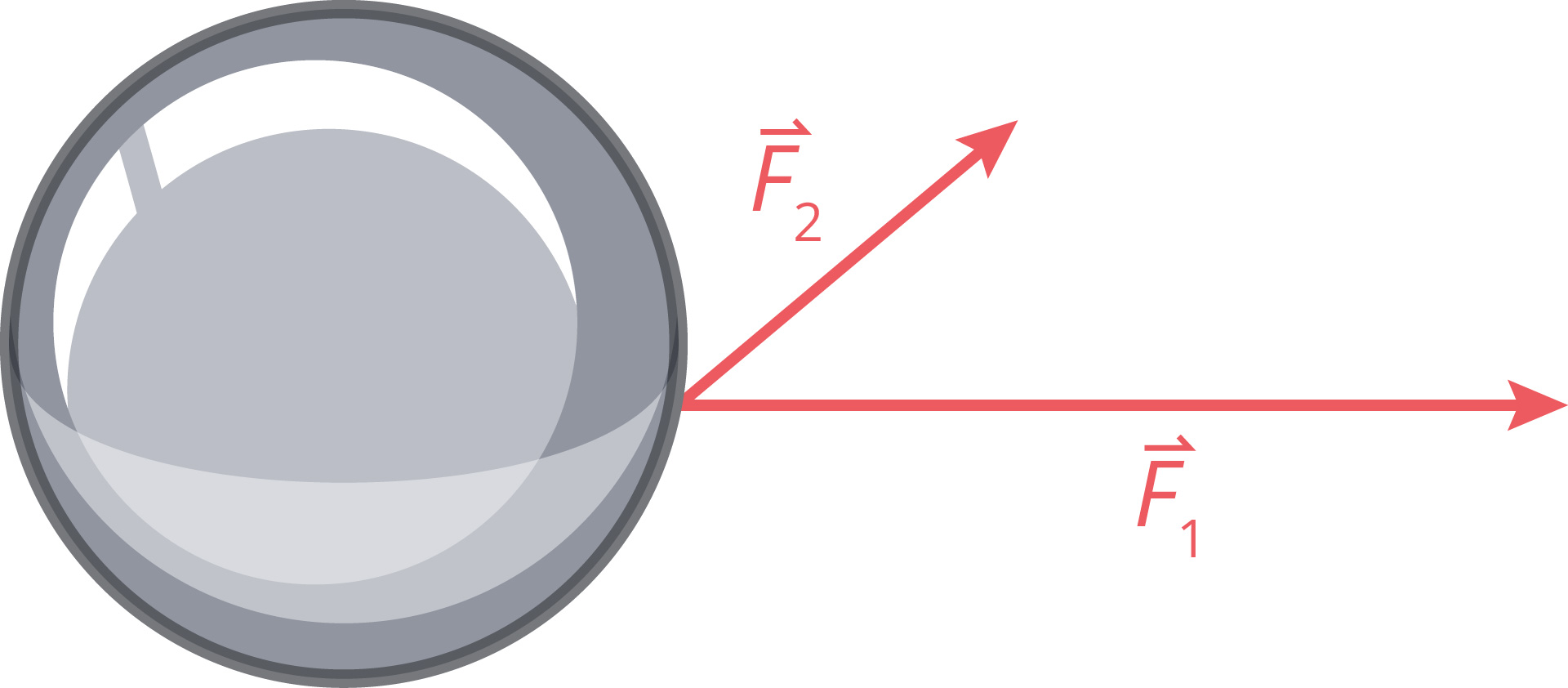Vectors are directed lines. Also, forces are illustrated with them. On the sketches, the used agreed marking is F.
The length of the vector is used to represent the magnitude of the force. The direction of the vector is used to represent the direction of the force. The point at which we start to draw the force is called the point of application.
In the example below, two forces are shown. ![]() is the force of gravity acting downwards.
is the force of gravity acting downwards. ![]() is the force of the string acting upwards.
is the force of the string acting upwards.

Look at the clip.
Arphy and his friend are pulling the sledge. Each of them applies the force on the sledge.
The combined action of several forces can be replaced by a single force, called the sum of the forces or the resultant of the forces. We will label it ![]() or
or ![]() . We do this by:
. We do this by:

1. We can move the vectors as much as we like, but we must make sure that their direction and size remain the same.

2. The resultant is obtained graphically by drawing the vectors one after the other.

3. The resultant is an oriented line, starting at the initial point of the first force and ending at the final point of the last force.

The two unparallel forces can be added using the parallelogram rule. To do this:
1. Move the forces to a common starting point.

2. Make a parallel to each of the forces through the tip of the other force.

Or we can use the triangle rule. To do this:
1. Move one force so the starting point is at the end of the other force.

2. The resultant is marked with green.



